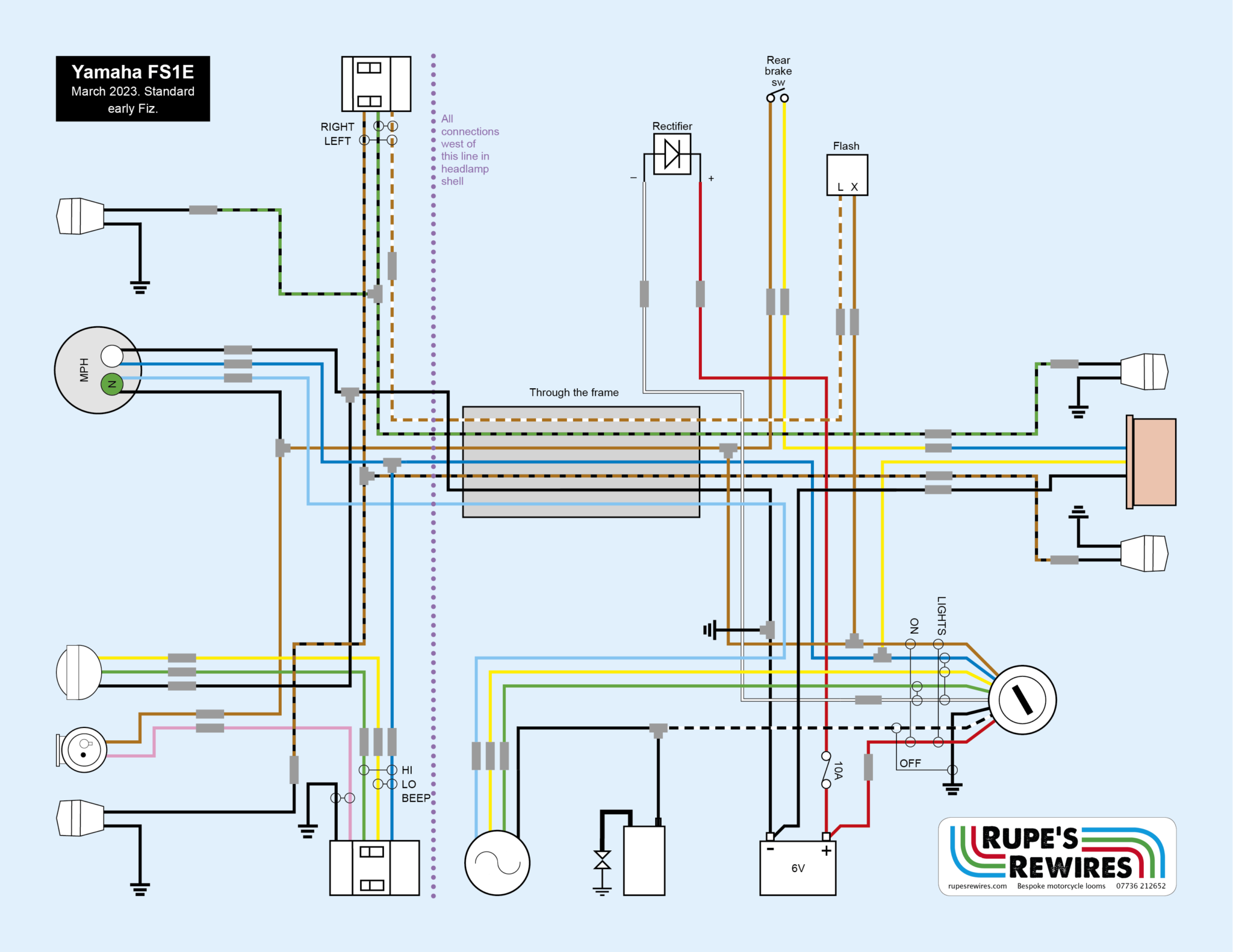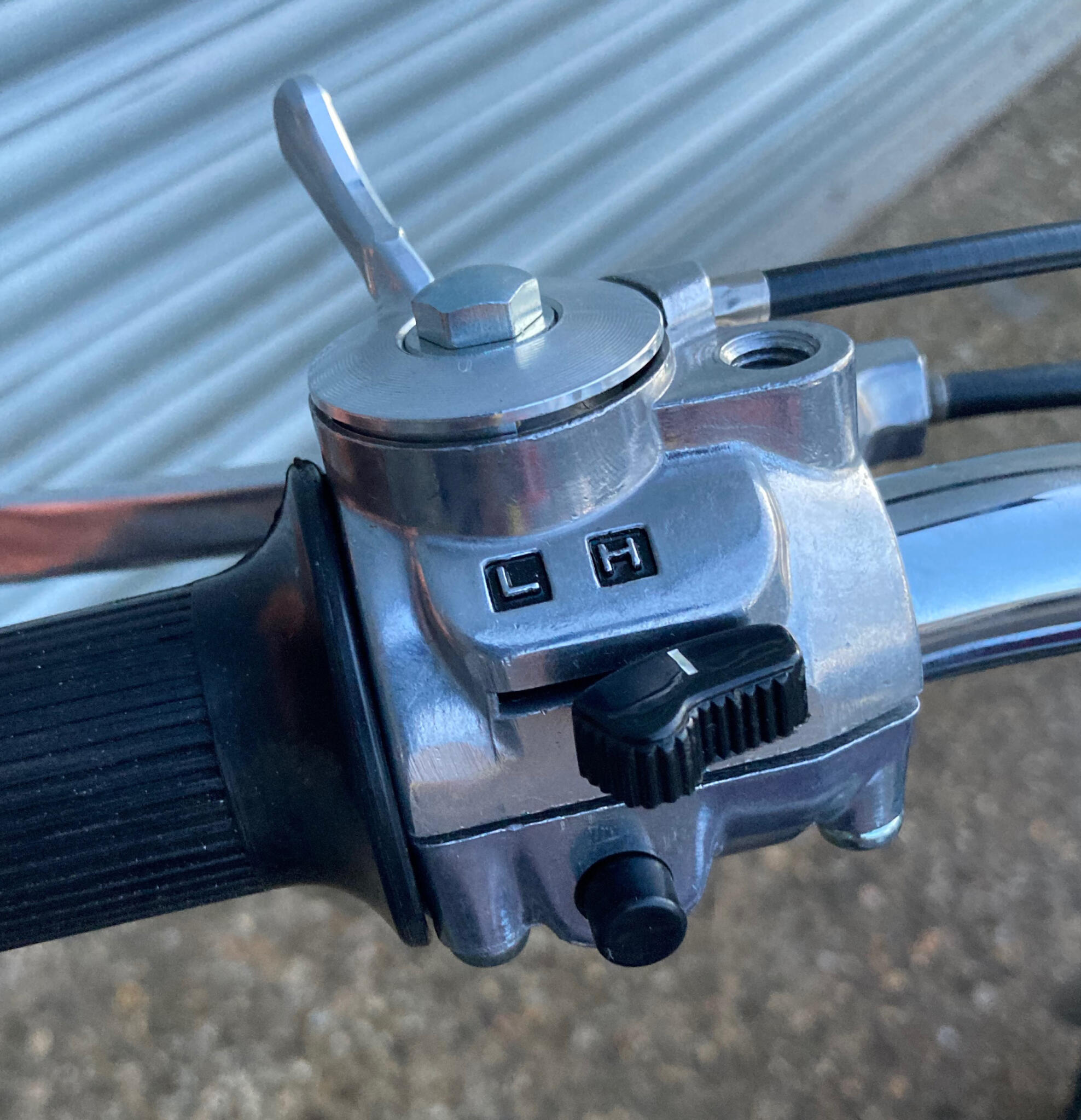Paul’s Yamaha FS1E
Another year, another Fizzy. This is an early one, around 1975, and Paul’s done a light restoration job. Fresh paint throughout, and a good few pattern parts from Yambits (who else?).
The main difference with an early Fizzy is the ignition switch – it sits behind the left side panel rather than up front in the usual place. It’s all very basic, with a single diode rectifier and 6V (which means feeble) AC lights.
As far as I know, a Fizzy has the simplest wiring loom of any bike with indicators. Once you’ve sorted out the headlight, tail light and battery area it is literally seven straight wires. Instead, the main problem is dealing with 40 years of enthusiastic owners, and the ravages of winter.
For example, the tail light on this bike might look spick and span but inside it’s been very rusty. It’s best to start again – I binned all the wires, removed as much rust as possible, remade the bulb contacts with solder, and soldered on an earth cable. That way we don’t have to rely on an earth contact through the mudguard. Solder bulb contacts aren’t ideal – they are softer than the original brass – but they are better than binning an otherwise usable component.
As if to say thanks, the tail light was quite bright, as were the indicators. And it is impossible to ride a Fizzy without grinning your head off.







